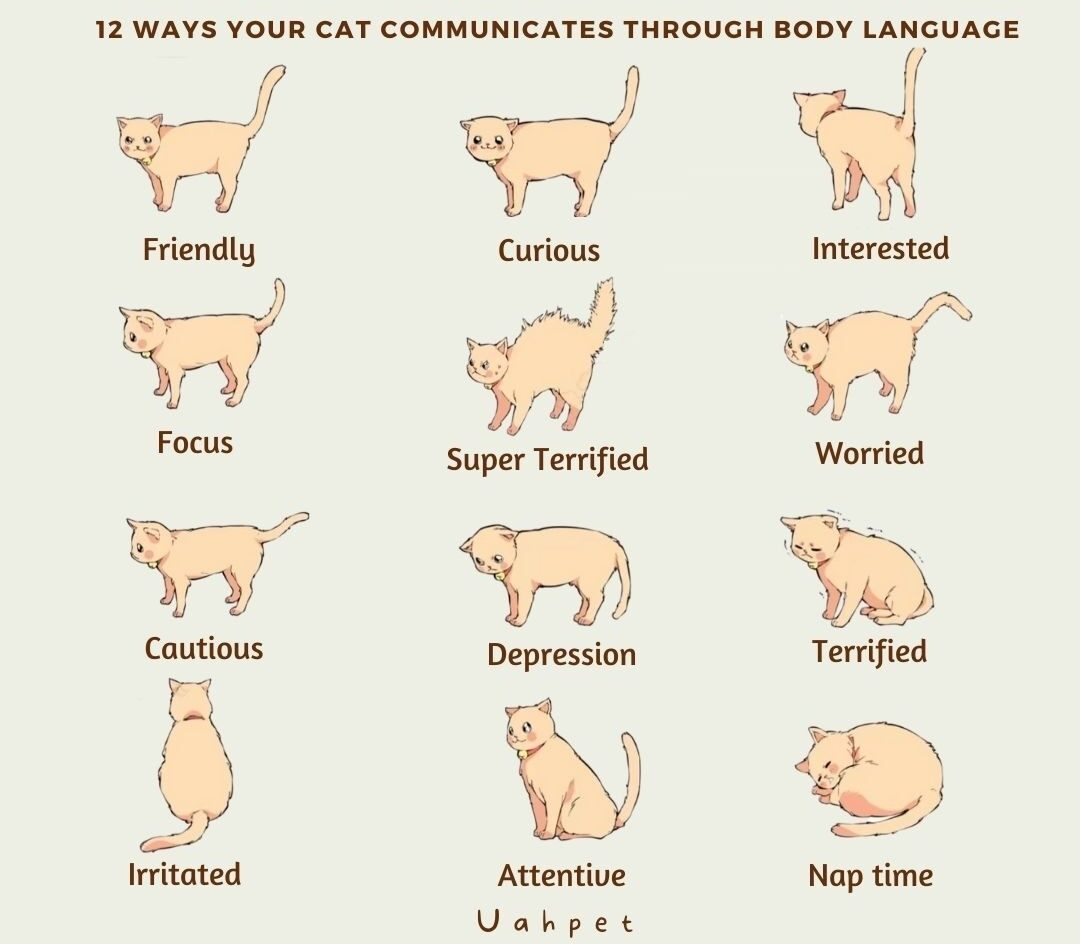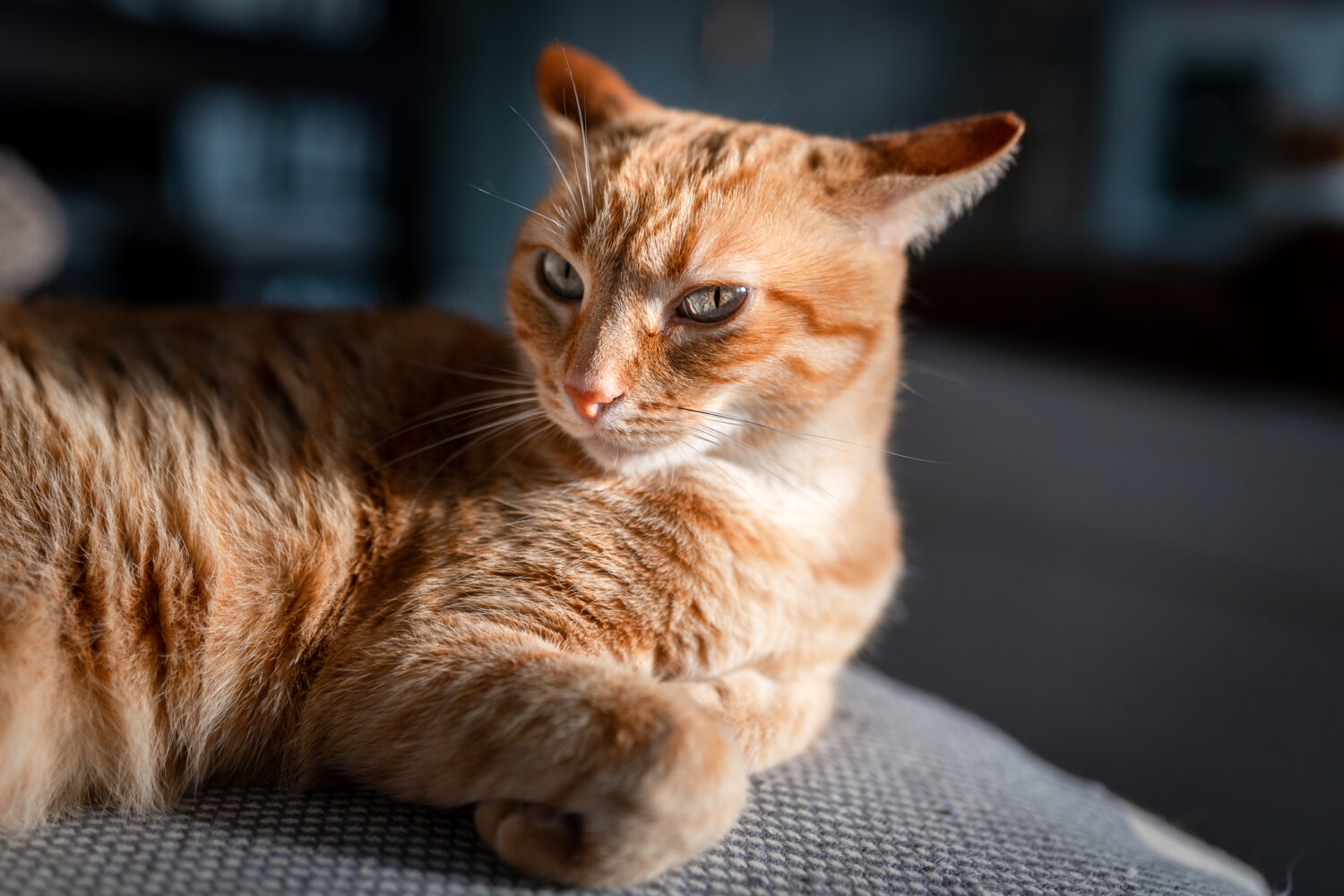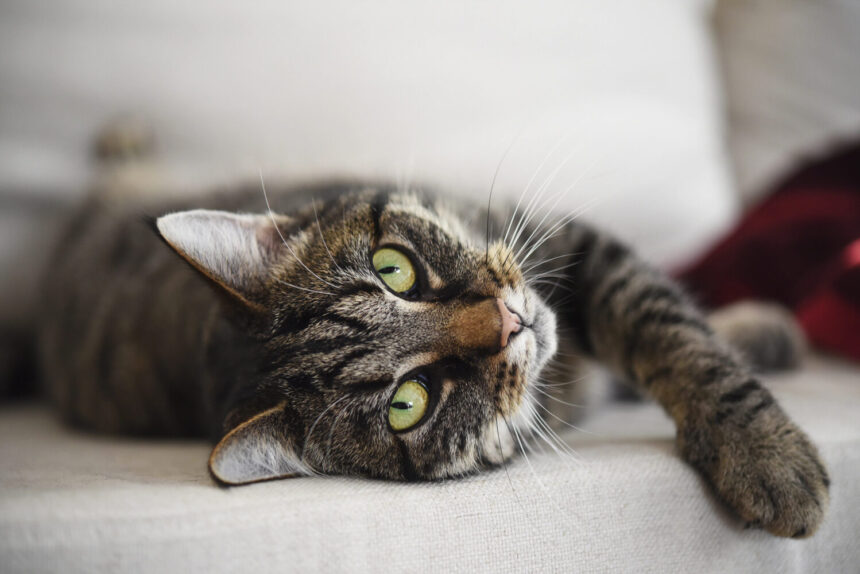Some days, your cat sits and just stares at you, as if it’s expecting you to understand what it’s saying. And you’re there wondering how to get crack the cat code or go on Duolingo and learn “catspeak”. In fact, your cat does try to communicate with you, using its own furry body language.
Together with the sweet meowing it does, her behavior and body cues turn into an actual means of communication.
Body language is a powerful tool in a cat’s real life. A cat will signal its intention to another cat from a great distance. And it also does this with you, you just need to pay attention to what it’s saying. Or purring.
Cats use an entire arsenal to communicate: the head with its mouth, eyes and ears, the tail, the body, and its paws.
General Body Language
When you look at your cat, what’s the first thing you see? The cat’s body, which displays an entire range of emotions:
- If your cat is sitting upright, with its behind legs tucked under, it means the cat is calm, ready to do things, and it won’t mind if you give it a hug.
- When your cat is loafing, or lying upright with its legs tucked under, it’s very relaxed, and probably half asleep.
- If your cat is lying on its side, this also reveals a happy, content kitty. It’s probably best to let it sleep.
- If your cat is lying on its back, this is a sign that it trusts you. A cat’s abdomen is a very sensible place and it won’t show it to just anyone.
- Your cat is crouching its body, with its pupils dilated, which means it’s nervous and ready to attack. This is the time you may hear screaming (usually a form of growling, hissing or yowling, which are all negative reactions).

Eyes and Ears
And what about its head? This is the most expressive part of a cat’s arsenal. Its eyes and ears are the first to signal the cat’s state of mind. Here are some interesting means of telling you how it feels:
- If your cat’s pupils are dilated and staring back at you, it means it is uncertain of something, alert, and distrustful. You may need to let it calm down, otherwise it might get aggressive. If it wants to hide, allow it and leave it alone until it comes back on its own. Sometimes, when its pupils are highly dilated, your cat may be eager to play and may engage in an attack at your hands or feet.
- Your feline friend’s pupils are almost invisible either when it’s tensed, restless, or about to burst into aggressivity, or when the room is covered in light.
- A slow-blinking cat means it’s in the mood to show its affection to you. It does this when it’s relaxed, calm and steady-tempered. It’s a good moment for you to respond back to it in an affectionate way.
- When your cat’s eyes are half closed, it means the cat is ready for its nap and kind of wants to be left alone to sleep. The cat is deeply relaxed and trustful.

If you want to know what your cat is saying to you, watch out for its ears. In feral cats, the ears are seen first by other cats passing by, announcing their disposition. It’s pretty much the same with domestic cats:
- If the ears are straight up, moving around to catch sounds, this means the cat is alerted, and anxious. It may also turn its head to hear and see the source of its restlessness better.
- If the ears are sideways or on the back, there is an imminent threat caused by another cat, a human or a place. It’s best to leave the cat alone and allow it to hide if necessary. Cats mostly turn their ears back when about to engage in a fight. It’s a means to protect their head and ears.
- When your cat’s ears are facing forward, the kitty is relaxed and calm. It feels good.
The Tail
A fluffy (or not) tail is another means of communication used by your cat. It’s tail will tell you a lot of things:
- When your cat’s tail is up high, it’s relaxed, curios or both. Usually, this is accompanied by the cat rubbing onto surfaces or people and moving its tail around really slowly.
- If the cat’s tail is vibrating, it’s either happy to see you, or in heat. Both male’s and females’ tails vibrate, similar to tomcats that spray around.
- Your happy cat can also keep its tail around it when sitting on their belly, with its paws underneath.
- When your kitty’s tail is down or under its belly, it means it’s scared and anxious and needs time alone. It might keep its eyes closed or avoid eye contact.
- If the tail is high and bushy, the cat is scared and probably in the search for trouble. Either it will engage in a fight, or just flee, be sure to leave it alone.

Meows, purrs and other sounds
When your cat has something to say, it’ll do it first by meowing.
- If your cat meows clearly, loudly and intensely, it’s probably hungry or there’s something urgent that it wants to draw attention over.
- Your cat is saying “hello” if you hear a sweet sound like ‘meeh’ or ‘eeh’. It’s time to say “hello” back to it.
- A cat in heat or with offspring may meow with a rolling “R” sound. It’s an affectionate way to ask for love.
- Purring is the sound of a happy, relaxed cat. But beware, some cats may purr even if they’re sick, so if anything seems suspicious, a visit to the vet won’t hurt.
- A scream means “beware, aggressive cat here”. A cat that is nervous, aggressive or overstimulated may make a ‘screaming-like’ noise (hard to explain, but may sound growling-like). Leave it alone to calm down.
Don’t know why your cat behaves a certain way? We can’t all master catspeak I guess. Comment below and we’ll help you get to the bottom of it.




